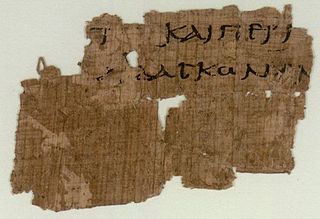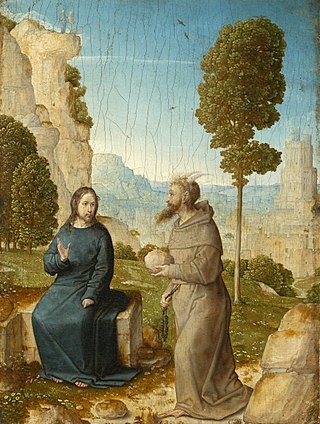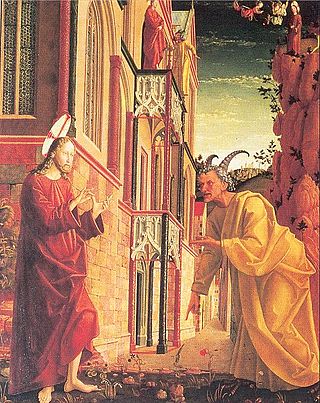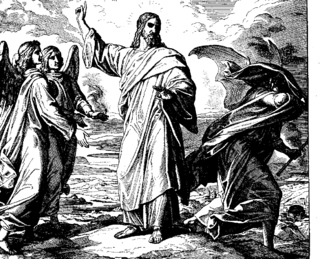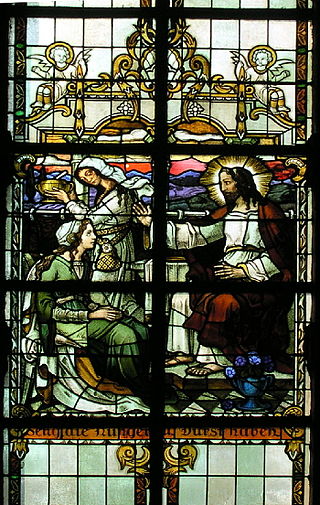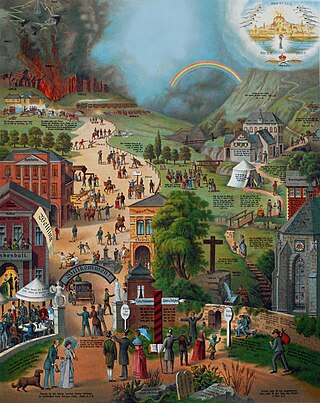John Chrysostom: "But that you may learn how great a good is fasting, and what a mighty shield against the Devil, and that after baptism you ought to give attention to fasting and not to lusts, therefore Christ fasted, not Himself needing it, but teaching us by His example."
Pseudo-Chrysostom: "And to fix the measure of our quadragesimal fast, he fasted forty days and forty nights."
John Chrysostom: "But He exceeded not the measure of Moses and Elias, lest it should bring into doubt the reality of His assumption of the flesh."
Gregory the Great: "The Creator of all things took no food whatever during forty days. We also, at the season of Lent as much as in us lies afflict our flesh by abstinence. The number forty is preserved, because the virtue of the decalogue is fulfilled in the books of the holy Gospel; and ten taken four times amounts to forty. Or, because in this mortal body we consist of four elements by the delights of which we go against the Lord’s precepts received by the decalogue. And as we transgress the decalogue through the lusts of this flesh, it is fitting that we afflict the flesh forty-fold. Or, as by the Law we offer the tenth of our goods, so we strive to offer the tenth of our time. And from the first Sunday of Lent to the rejoicing of the paschal festival is a space of six weeks, or forty-two days, subtracting from which the six Sundays which are not kept there remain thirty-six. Now as the year consists of three hundred and sixty-five, by the affliction of these thirty-six we give the tenth of our year to God."
Augustine: "Otherwise; The sum of all wisdom is to be acquainted with the Creator and the creature. The Creator is the Trinity, Father, Son, and Holy Ghost; the creature is partly invisible,—as the soul to which we assign a threefold nature, (as in the command to love God with the whole heart, mind, and soul,)—partly visible as the body, which we divide into four elements; the hot, the cold, the liquid, the solid. The number ten then, which stands for the whole law of life, taken four times, that is, multiplied by that number which we assign for the body, because by the body the law is obeyed or disobeyed, makes the number forty. All the aliquot parts in this number, viz. 1, 2, 4, 5, 8, 10, 20, taken together make up the number 50. Hence the time of our sorrow and affliction is fixed at forty days; the state of blessed joy which shall be hereafter is figured in the quinquagesimal festival, i. e. the fifty days from Easter to Pentecost."
Augustine: "Not however because Christ fasted immediately after having received baptism, are we to suppose that He established a rule to be observed, that we should fast immediately after His baptism. But when the conflict with the tempter is sore, then we ought to fast, that the body may fulfil its warfare by chastisement, and the soul obtain victory by humiliation."
Pseudo-Chrysostom: "The Lord knew the thoughts of the Devil, that he sought to tempt Him; he had heard that Christ had been born into this world with the preaching of Angels, the witness of shepherds, the inquiry of the Magi, and the testimony of John. Thus the Lord proceeded against him, not as God, but as man, or rather both as God and man. For in forty days of fasting not to have been an hungred was not as man; to be ever an hungred was not as God. He was an hungred then that the God might not be certainly manifested, and so the hopes of the Devil in tempting Him be extinguished, and His own victory hindered."
Hilary of Poitiers: "He was an hungred, not during the forty days, but after them. Therefore when the Lord hungred, it was not that the effects of abstinence then first came upon Him, but that His humanity was left to its own strength. For the Devil was to be overcome, not by the God, but by the flesh. By this was figured, that after those forty days which He was to tarry on earth after His passion were accomplished, He should hunger for the salvation of man, at which time He carried back again to God His Father the expected gift, the humanity which He had taken on Him."





